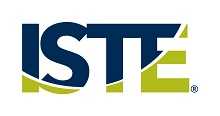Kids are immersed in technology from a very young age. So why do digital citizenship courses focus on middle school and above?
 Ed. note: Innovation In Action is a new monthly column from the International Society of Technology in Education focused on exemplary practices in education.
Ed. note: Innovation In Action is a new monthly column from the International Society of Technology in Education focused on exemplary practices in education.
 Recently, I was reflecting on how we as parents and teachers account for all of our children when we are in public areas. Be it on a field trip, vacation, or just a trip to the toy store, we count heads to make sure they’re with us and safe. In a digital learning environment, how can educators ensure that students are being safe while they are online?
Recently, I was reflecting on how we as parents and teachers account for all of our children when we are in public areas. Be it on a field trip, vacation, or just a trip to the toy store, we count heads to make sure they’re with us and safe. In a digital learning environment, how can educators ensure that students are being safe while they are online?
Throughout my career, I’ve taught the use of technology to elementary students. While at my former school district, I worked with colleagues to create a comprehensive Internet Safety Unit with a specific focus on digital citizenship. In my current job at Lower Moreland Township School District, I still look for opportunities to reinforce digital citizenship skills within my lessons. A key element of this program was to address an ISTE Standard for teachers to “Promote and model digital citizenship and responsibility.”
How can we help all students–from elementary to post-secondary–be savvy digital citizens? It might not be as difficult as you think. There are some easy ways for all educators to help students build these important skills.
Next page: How to talk to young learners about online safety and more
1. Start a dialogue with your students. I believe it starts with listening and learning with the students. When I started discussing internet safety and digital citizenship with my students, I opened up a conversation with them. I was amazed by what I learned about my students individually. For example, one student in third grade proudly mentioned hearing the adults curse online while playing a video game. I asked him if he thought this was appropriate. His response, of course, was that he was fine. At that time, he had not been one of my stand-out students academically. But, at the end of this project, I discovered he had done an outstanding job creating his Internet Safety Tips flyer. It was obvious to me that he had been thinking about the subject long after our discussion. Over the next two years, he became one of my top students, participating in class and doing quality work in class projects. Best of all, his responses evolved into thoughtful, well-crafted contributions to class discussions.
2. Involve the students. Look for unexpected responses. They are the ones that present opportunities to guide students into online safety reflection. Numerous times I’ve heard that children know more about computers than adults. While they may know much more about the computer games they play, I think it is the rare child who knows a great deal about the computer and the technology itself. I’m delighted to have participated with the Code.org campaign for that reason. Just as children learn to build their mathematical skills by guided exploration, trial and error, they also learn to build their technological skills in the same way. Start with the simple things in life and the foundation is set for the future. As adults, we still need to coach and mentor our children as they construct and make meaning of their own learning. Simple tasks, such as navigating through a district network vs. a cloud service and following secure back up procedures are expected skills in the working world. These are not necessarily skills needed on a standalone computer game that automatically saves.
3. Collaborate with peers and borrow best practices. There have been some excellent lesson plan ideas shared for teaching about digital footprints, cyberbullying, and internet safety. However, what consistently strikes me is that they are mainly relevant for middle or high school students. Speak with other elementary school teachers about how they are handling the subject in their classrooms.
4. Start building awareness early. It’s critical to start teaching digital citizenship at a young age. In the same way that we build the understanding of mathematical concepts starting in kindergarten, we need to scaffold the different pieces of digital citizenship as soon as students enter school. Different strategies are needed for our youngest students to begin building their knowledge base about the use of technology. The very youngest need to understand the concepts in a child-friendly, simple way. For example, using pretend animals in stories helps them relate empathetically without building anxiety.
My anecdotal observations and numerous conversations with my colleagues tell me that we have both an opportunity and a responsibility to begin these discussions at the elementary level. By doing that, we can impart useful guidelines for even our youngest minds to which they can refer for proper online behavior. There is much awareness being created about bullying and cyberbullying at the tween and teen ages. However, we need to take begin awareness sooner. Then, hopefully, when we count our students, we won’t be missing anyone.
Carmela N. Curatola Knowles is the author of the Piano and Laylee Learning Adventures Series, which covers digital citizenship topics for children aged 5-9.
- TC- What student choice and agency actually looks like - November 15, 2016
- What student choice and agency actually looks like - November 14, 2016
- App of the Week: Science sensor meets your smartphone - November 14, 2016


Comments are closed.